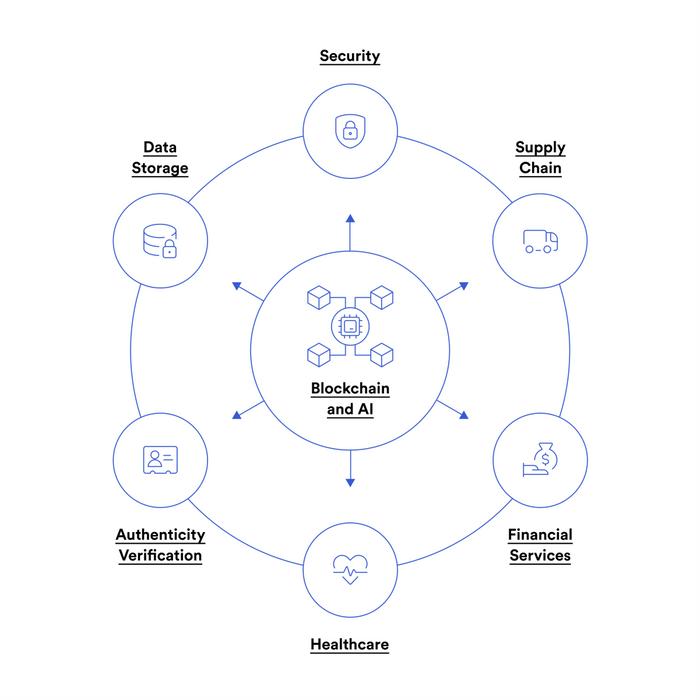Supply chains must meet multiple objectives: high levels of customer satisfaction, profitability tar
Supply chains must meet multiple objectives: high levels of customer satisfaction, profitability targets and resilience to disruptions. Companies are also beginning to prepare their supply chains for a responsible future, ensuring that their production and transport systems are safe and environmentally friendly, that raw materials come from sustainable sources and that workers are paid a fair wage. Until recently, the cost of achieving all these goals was high, forcing organisations to make trade-offs. However, analytics combined with the Internet of Things (IoT) and blockchain technology are rapidly making these goals possible.
Research shows that blockchain can dramatically improve supply chain performance. However, capturing its potential to do so will require new permissioned blockchains (i.e., blockchains where participation is limited to known supply chain partners), data standards and governance rules.
Developing capabilities
There are four types of steps that companies should take to strengthen their supply chains, but they should be patient; it will take time to implement these steps and realise the benefits
1. Add IoT and tracking capabilities. Organisations should equip their supply chains with IoT capabilities and the ability to track individual components and finished goods inventory. Simply put, the IoT is the ability of machines to automatically collect data such as temperature, pressure, GPS location and barcode scans using sensors and automatically upload this data to a cloud server via the internet.
The IoT enables organisations to collect new types of data from different stages of their supply chain. For example, such devices can track the production of packaged food from raw material procurement through to production, transport and retail, including the status of stock and working conditions in manufacturing and logistics facilities.
2. Record transaction data. Organisations should record transaction data from IoT devices on the blockchain, which can capture extremely detailed and decentralised data and can be used to verify the authenticity of transaction records. Companies can use this data to ensure sustainable procurement, improve the execution of supply chain contracts and obtain better financing.
Because the implementation of blockchain-based systems can be done in a decentralised step-by-step manner, there is no need for significant investment in IT systems or expensive third-party certification.
3. standardisation and alignment of data from different sources. This is necessary to use data collected from IoT devices in the supply chain.
Suppose a company uses temperature sensors in a fulfilment centre to record hourly storage temperatures and uses inventory scanners to track the movement of inventory in and out of the fulfilment centre. The company needs to align these data tables to see which stock units have been stored at what temperature for how long.
Here's another example. When consumer goods companies use blockchain to source palm oil from sustainable deforestation-free agriculture, the units of data collected change throughout the supply chain, from palm fruit to oil to derivatives to finished consumer products. Data from each stage is combined with a bill of materials to fully track the inputs to each finished batch. Doing so requires capabilities in data storage, missing value interpolation and descriptive analysis.
4. Develop predictive and prescriptive analytics. For example, temperature data from a fulfilment centre can be used to predict how long a food product will take to ripen or spoil. This predictive model can then be used to guide inventory planning and design promotions for food that is about to spoil. This will improve profitability and reduce food waste.
Ripe.io is an agri-tech organisation that uses traceability data on tomato production to link the flavour of ripe tomatoes to growing conditions. Predictive analysis allows the company to grow different types of tomatoes according to the needs of different customer segments.
Another organisation, Dibiz, a blockchain platform for the sustainable sourcing of palm oil, has found that smallholder farmers' data is visible to all members of their supply chain, enabling distributors and mills to optimise pick-up routes according to actual conditions. -time fruit harvest. This reduces logistics costs to the benefit of farmers and factories. In addition, it improves the quality of the fruit reaching the mill, thus increasing the rate of oil extraction (in terms of volume), reducing the risk of deforestation and generating higher returns for farmers.
Where to start
It is not necessary for an organisation to develop all four competencies at the same time. It can develop them in any order and at any scale.
For example, a company might start recording existing transaction data on the blockchain and use it to track the movement of units before investing in IoT devices to collect new data. Or, the company might start using IoT devices and analytics before acquiring blockchain technology. In fact, these capabilities are complementary: each makes developing the others more feasible and productive. As a result, even small investments in IoT technology, blockchain and analytics can deliver significant returns in the long run.
How to measure success
The benefits gained from blockchain, IoT devices and analytics can be seen as a hierarchy.
At a fundamental level, the quickest source of value is through visibility, traceability and automation of supply chain tasks to reduce execution errors and increase productivity. This benefit - which is particularly useful in the pharmaceutical, food and shipping industries - can be achieved very quickly because it can be gained by collecting and recording previously hidden data; it does not require further analysis. For example, Walmart Canada and DLT Labs used IoT data and blockchain to improve the billing accuracy of third-party freight logistics providers. They have reduced billing disputes from 70% to less than 5%, resulting in significant cost savings and faster payment disbursement.
The next level of benefits is based on predictive analytics and optimisation applied to the data collected. Such applications take longer to develop, but can be of great value. The Ripe.io and Dibiz examples I have described fall into this category.
In addition, this type of application is possible in areas such as closed-loop supply chains, where manufacturers are responsible for collecting used products from consumers and recycling or recovering them in a safe and environmentally friendly way, tracking the greenhouse gases used at each step of the the supply chain, and reducing food waste. For example, it is often not possible to separate batches of perishable food products from each other at fulfilment centres. However, if each batch is tracked individually, its remaining shelf life can be calculated and the data can be used as input to design new algorithms for allocating stock to retail outlets, soup kitchens and food pantries.
The biggest potential sources of benefit are the use of data and analytics to create new products and services, such as creating new marketplaces that use blockchain data to match buyers and sellers, writing more efficient contracts, using blockchain-based systems to measure work and improve performance more easily, and using visibility of activities across all levels of the supply chain to create bespoke products.
As a result of these advances, supply chains may ultimately become more environmentally friendly and provide better wages, security from contamination and greater transparency for all members of the supply chain and consumers.
Related Article
-

What is the Internet of Things? Internet of Things Overview and Detailed Explanation
-

Enterprise IoT spending growth slows: to grow 12% to $301 billion this year, study says
-

Chinese tech firm Baidu's Apollo GO full-fledged commercial application into Wuhan online taxi
-

Main Application Scenarios of Internet of Things
-

What are the application scenarios of AI combined with blockchain?
-

A quarter out of $2.2 billion BTC, Twitter's former CEO of the company how to "muffled earnings"?

